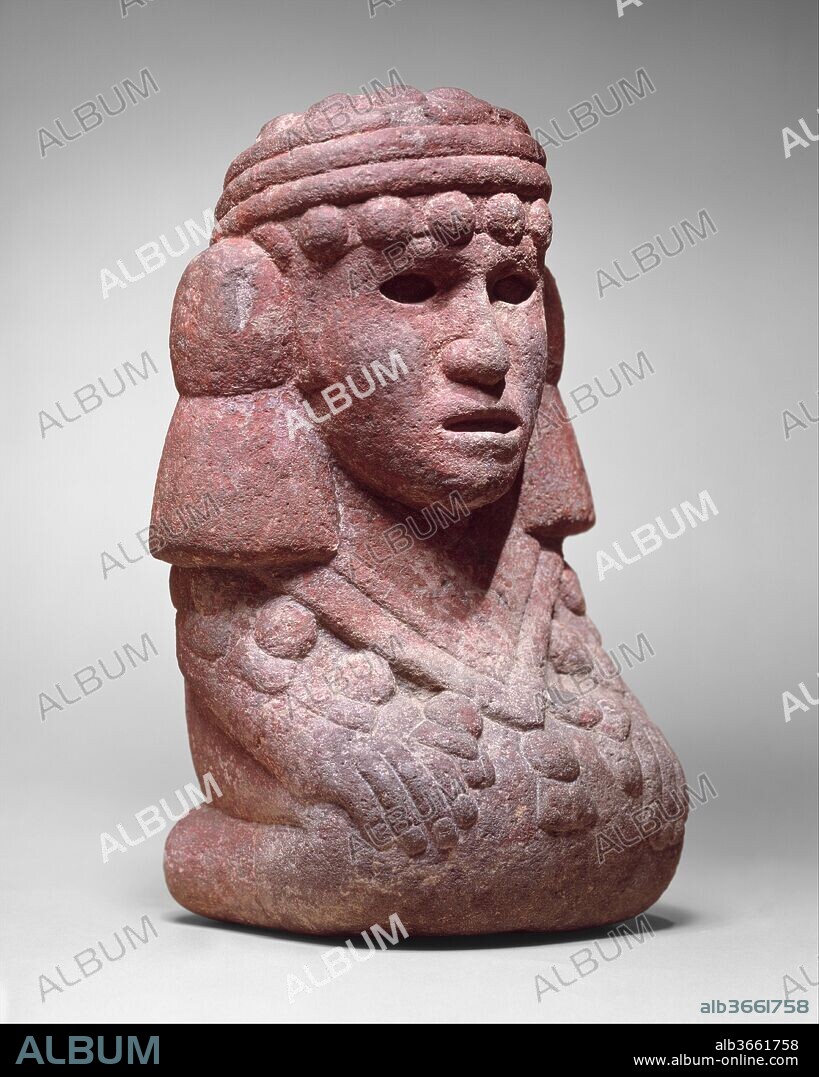alb3661758
Water Deity (Chalchiuhtlicue)

|
Ajouter à une autre Lightbox |
|
Ajouter à une autre Lightbox |



Avez-vous déjà un compte? S'identifier
Vous n'avez pas de compte ? S'inscrire
Acheter cette image.
Sélectionnez l'usage:

Titre:
Water Deity (Chalchiuhtlicue)
Légende:
Voir la traduction automatique
Water Deity (Chalchiuhtlicue). Culture: Aztec. Dimensions: H. 11 5/8 × W. 7 1/8 × D. 5 1/2 in. (29.5 × 18.1 × 14 cm). Date: 15th-early 16th century.
The finely carved figure belongs to a sizable group of kneeling females that display costume elements identifying them as water deities called Chalchiuhtlicue ("she of the jade skirt") in Nahuatl, the language spoken by the Aztecs. In Aztec religion, the water goddess was the wife of the rain god Tlaloc, an ancient deity that had long been worshipped throughout Mesoamerica. Chalchiuhtlicue symbolized the purity and preciousness of spring, river, and lake water that was used to irrigate the fields. As a fertility goddess, she portrays the Aztec ideal of fertile young womanhood. Most typical of the water goddess costume is the distinctive headdress consisting of multiple thick bands, probably cotton, wound about the head and bordered above and below by rows of balls and two large tassels attached to the sides of the head. In back, the bands are twisted and tied in a prominent knot, the tasseled ends falling over her straight hair. Her clothing is that of a noble woman with a skirt and triangular shoulder cape bordered by a tasseled fringe. The water goddess was closely related to the Aztec corn goddess, Chicomecoatl, who is often also shown wearing this headdress, while holding ears of corn in her hands.
Technique/matériel:
Basalt, pigment
Musée:
Metropolitan Museum of Art, New York, USA
Crédit:
Album / Metropolitan Museum of Art, NY
Autorisations:
Modèle: Non - Propriété: Non
Questions sur les droits?
Questions sur les droits?
Taille de l'image:
3276 x 4094 px | 38.4 MB
Taille d'impression:
27.7 x 34.7 cm | 10.9 x 13.6 in (300 dpi)
Mots clés:
 Pinterest
Pinterest Twitter
Twitter Facebook
Facebook Copier le lien
Copier le lien Email
Email
